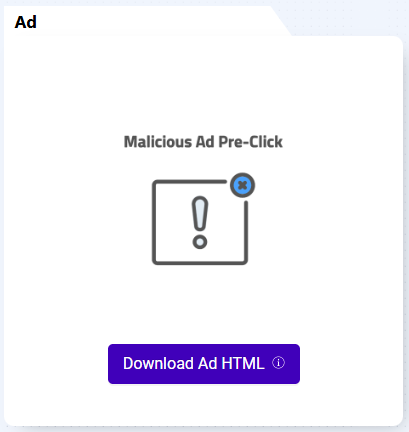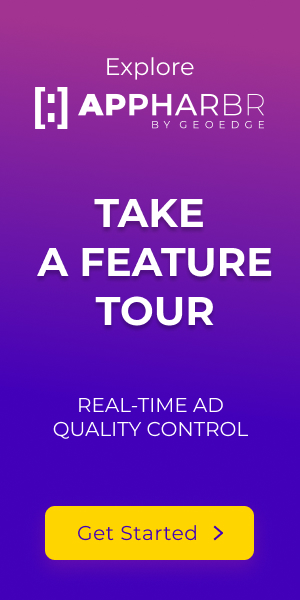Forced click ads in mobile apps represent one of the most significant threats facing app developers, monetization managers, and publishers. These deceptive ads trick users into unintended interactions which damage your brand reputation, inflate fraudulent metrics, and compromising revenue streams.
For mobile game studios and app developers striving to maintain trust and profitability, proactively flagging and removing these unwanted ads is essential. This comprehensive guide explores forced click and misleading ads, actionable solutions, and best-practice strategies to safeguard your app’s revenue and ad quality. Gain original insights into enhancing user experience, protecting your monetization strategy, and achieving complete control over your mobile advertising environment.
What Are Forced Click Ads in Apps and Games?
Mobile forced click ads in apps and mobile games are intentionally deceptive advertisements designed to trigger accidental or involuntary clicks. Frequently, these ads disguise interactive elements as game components, misleading users into believing interaction is required to continue playing. Examples include fake close buttons, deceptive pop-ups with hidden skip functions, and misleading rewarded ads. A forced click can also triggered by an overly-sensitive touch action such as scrolling where there is no indication that a user is clicking on something that will send them to a new page, but the click is secretly imbedded in the natural use of the app.

Advertisers may use forced click ads for a short-term financial gain or meet aggressive monetization goals, but this deceptive approach ultimately makes the app suffer by harming brand reputation and user trust. This tactic also includes the risks expulsion from reputable ad networks, the Apple App Store and the Google Play Store. Clearly identifying and addressing forced click advertising practices is essential for maintaining adherence to guidelines and sustainable monetization activity.
How to Detect Forced and Misleading Click Ads in Your Apps
Identifying forced and misleading click ads in your app requires vigilant monitoring and specialized tools. Signs of deceptive advertising include abnormally high click-through rates (CTR) paired with poor post-click engagement. This can also be an indicator of bot clicks, a deceptive tactic scammers user to make money by imitating human interaction. Legitimate user reviews and feedback often indicate frustrations relating to accidental clicks, and can alert publishers of forced click behavior that needs to be resolved. Regularly auditing ad performance across various ad networks is essential, especially networks historically associated with problematic creatives. This helps ensure that your app can maximize the LTV of quality users.
It’s essential for app studios to understand where these examples come from and implement an in-app solution to automate detection that highlights suspicious ads in real-time. By actively monitoring and integrating dedicated solutions, app studios maintain ad integrity, safeguard revenue, and protect brand credibility.
Effective Tools and Methods to Block Forced Click Ads in Games
Eliminating forced click ads from apps demands specialized technology capable of identifying and filtering deceptive creatives automatically. Given the overwhelming task of manually screening every ad shown in your app, mobile publishers rely on automated and proactive solutions to acquire and retain quality users. When evaluating potential solutions, consider real-time monitoring capability, comprehensive analytics, accuracy in deception detection, seamless ad stack integration, and minimal impact on app performance. With the right solution, publishers streamline their operations, reduce deceptive clicks, secure positive advertiser relationships, and protect reliable revenue growth.

Proven Strategies to Prevent Accidental Ad Clicks in Apps
Preventing accidental ad clicks is crucial for sustained monetization and user retention. Publishers must adopt practical strategies to mitigate unintended clicks––whether they’re a result of an honest glitch or a bad actor– starting with strategic ad placement away from interactive gameplay elements. One component of eliminating such ads is implementing an adaptive app interfaces with clear buffering around ads reduce unintended taps. Similarly, specialized SDK tools deliver automated accidental-click detection and prevention, proactively removing problematic ads. By combining intelligent UX/UI strategies and advanced prevention technology, mobile publishers can significantly protect their reputation and monetization success.
Monitoring and Controlling Mobile Ad Quality to Stop Forced Click Issues
Effective ad quality management involves continuous monitoring and proactive prevention of forced click ad infiltration. Real-time visibility of ad inventory is essential to swiftly identify forced interactions. Publishers should utilize advanced mobile ad quality solutions that immediately alert their teams about abnormal click activity and declining engagement. Robust quality assurance procedures help flag and eliminate problematic ads promptly, as well as any bad actors purposely executing such attacks. By integrating comprehensive ad quality solutions, publishers unify performance monitoring across ad networks, empowering their teams to take quick, decisive action to protect user satisfaction, maintain revenue integrity, and build confident advertiser relationships.
How to Report and Remove Forced Click Ads in Mobile Games and Apps
Ensuring your apps remain free from forced click ads depends on establishing proactive ad quality protection. Empowering users with in-app reporting channels and maintaining clear communication with ad network providers facilitates faster identification and removal of malicious ads. Transparent reporting helps assure advertisers of your commitment to quality, strengthening trust and partnerships.
Monitoring reports plays a large part in staying on top of ad quality, but it’s also important to get ahead of these seemingly-inevitable issues. Leveraging ad-quality solutions also automates detection and removal, proactively addressing threats before they damage user experience. AppHarbr has triggers for these kinds of errors, keeping them off your users’ screens in the first place. It’s taken a step further with AppHarbr’s automated reporting feature, letting ad networks know that they served these ads. This ensures the acquisition, retention, and engagement of high-value users. Ultimately, streamlined reporting and responsive removal processes help protect revenue, advertiser confidence, and publisher credibility.
Game and App Design Strategies to Help Avoid Click Traps
Effective app and game design can prevent deceptive click traps strategically created to trick legitimate users into involuntary ad clicks. Publishers should approach user-interface (UI) design carefully, ensuring clear separation and buffering between game components and advertisements. Consistent visual language helps users intuitively distinguish legitimate interactions from potential click traps, such as overly-sensitive touch actions or impractically small X buttons. Additionally, publishers benefit from solutions explicitly developed to flag and eliminate deceptive ads from your app automatically. A combination of thoughtful design up front and the use of an automated in-app solution helps publishers provide frictionless user experiences, preserve monetization integrity, and reinforce positive brand perceptions across competitive app marketplaces.
Comparing the Best Tools to Filter Out Deceptive Click Ads
Selecting proactive, real-time tools to combat deceptive ads is crucial for publishers aiming for reliable, scalable solutions. When comparing potential solutions, prioritize accuracy, ease and speed of integration, flexibility, detailed analytics, minimal performance impact, and proactive real-time protection features. Effective in-app solutions should integrate effortlessly into current ad tech ecosystems, enabling minimal disruption while optimizing overall ad quality control. Selecting a proven, realtime solution helps you optimize user acquisition and LTV through ad quality control.
Protect Your App Revenue from Forced Click Ads
Forced click ads can seriously impact your mobile app’s reputation, revenue stability, and user retention. Publishers and monetization teams must proactively detect, block, and remove forced advertising through strategic actions, design adjustments, and proactive in-app solutions. AppHarbr’s advanced mobile ad quality solutions offer comprehensive protection, and reliable, automated controls that empower publishers to maintain profitability, advertiser trust, and a positive market reputation.
Don’t let forced click ads threaten mobile app revenue; proactively detect, block, and remove deceptive advertising using practical design strategies and solutions like AppHarbr.




